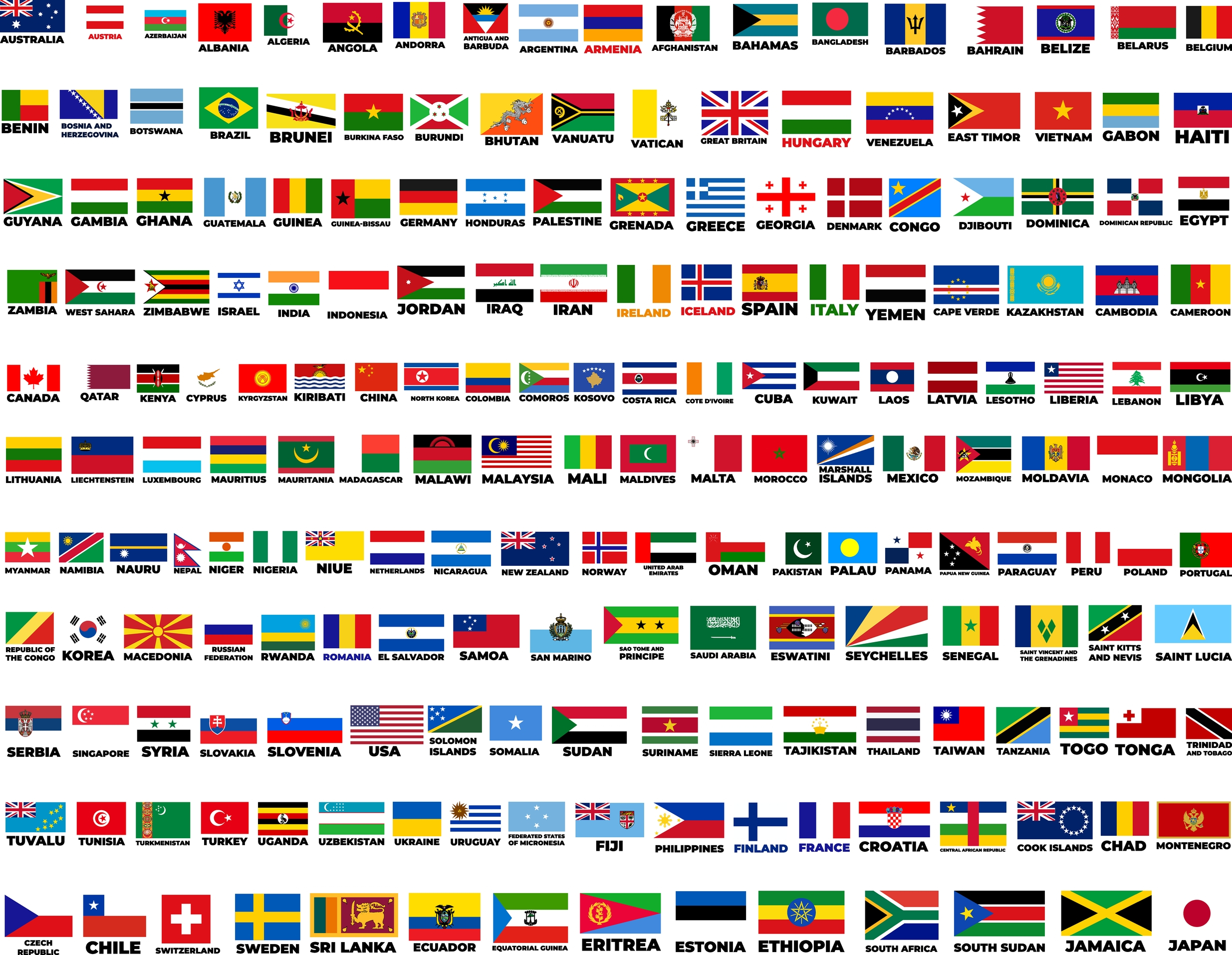Hey everyone! Can you name the flags of all countries? If so, this flag quiz is for you! Take up the challenge and name twenty flags! Will you take up the challenge?
A national flag is a flag that represents and symbolizes a given nation. It is flown by the government of that nation, but usually can also be flown by its citizens. A national flag quiz is typically designed with specific meanings for its colors and symbols, which may also be used separately from the flag as a symbol of the nation. The design of a national flag is sometimes altered after the occurrence of important historical events. The burning or destruction of a national flag is a great symbolic act.

Scholar Xiao Congrong pointed out that no matter how the concept of the national flag changes, its essence has not changed – the “symbolic flag” for identifying identity. The meanings of identity, politics, and military behind the symbol are all ways of use explored by people in practice according to purpose and communication. Because the national flag essentially shows the identification symbol of political power in the form of a flag, sometimes there is more than one “symbol flag” that can represent the political power, and they can even replace each other without special provisions, which leads to some countries or political powers using other flags instead of the national flag in actual use.
The national flag, as the flag symbol of the state power, is related to the flag symbol of the political entity of the predecessor of the state power. The origin of flag design is usually closely related to war and military flags and is even shared in the early stage – because a new regime often faces the pressure of war. In addition, military groups (such as the revolutionary army, insurgent army, military government, etc.) often play an important role in a regime. In addition to the military flag, the symbolic flags of these political entities can also be traced back to the flags of the chamber of commerce, the party flag, the colonial flag, and other flags of the predecessor of the regime. They have a lot of superposition in practical use, that is, the flag of the political entity has a certain symbolic meaning representing the army and the regime before it is upgraded to a formal flag.
The national flag is often mentioned or described in a country’s constitution, but its detailed description may be delegated to a flag law passed by the legislature, or even secondary legislation or in monarchies a decree.
Thus, the national flag is mentioned briefly in the Basic Law for the Federal Republic of Germany of 1949 “the federal flag is black-red-gold” (art. 22.2 Die Bundesflagge ist Schwarz-rot-gold), but its proportions were regulated in a document passed by the government in the following year. The Flag of the United States is not defined in the constitution but rather in a separate Flag Resolution passed in 1777.
Minor design changes of national flags are often passed on a legislative or executive level, while substantial changes have constitutional character. The design of the flag of Serbia omitting the communist star of the flag of Yugoslavia was a decision made in the 1992 Serbian constitutional referendum, but the adoption of a coat of arms within the flag was based on a government “recommendation” in 2003, adopted legislatively in 2009 and again subject to a minor design change in 2010. The Flag of the United States underwent numerous changes because the number of stars represents the number of states, proactively defined in the Flag Act of 1818 to the effect that “on the admission of every new state into the Union, one star be added to the union of the flag “; it was changed for the last time in 1960 with the accession of Hawaii.
A change in national flag quiz is often due to a change of regime, especially following a civil war or revolution. In such cases, the military origins of the national flag and its connection to political ideology (a form of government, monarchy vs. republic vs. theocracy, etc.) remain visible. In such cases, national flags acquire the status of a political symbol.
The flag of Germany, for instance, was a tricolor of black-white-red under the German Empire, inherited from the North German Confederation (1866). The Weimar Republic that followed adopted a black-red-gold tricolor. Nazi Germany went back to black-white-red in 1933, and black-red-gold was reinstituted by the two successor states, West Germany and East Germany, with East Germany’s flag being defaced with Communist symbols, following World War II. Similarly, the flag of Libya introduced with the creation of the Kingdom of Libya in 1951 was abandoned in 1969 with the coup d’état led by Muammar Gaddafi. It was used again by National Transitional Council and by anti-Gaddafi forces during the Libyan Civil War in 2011 and officially adopted by the Libyan interim Constitutional Declaration.
Are you able to assign flags from all over the world to the names of their countries? Will you take up the challenge to score the maximum number of points in this flag quiz? Answer twenty questions flawlessly and earn the title of champion!